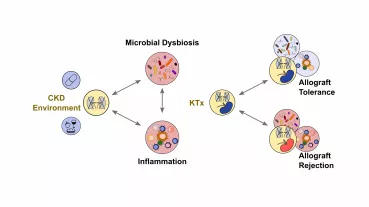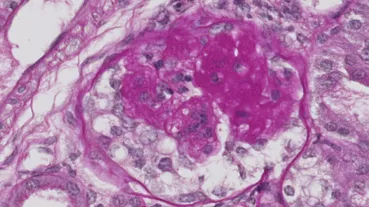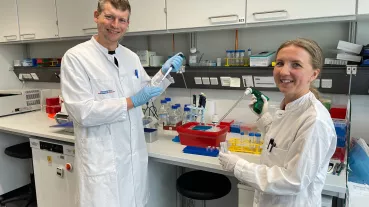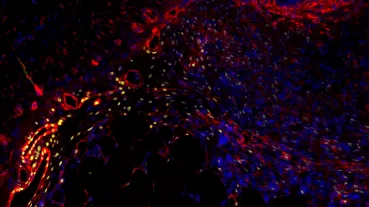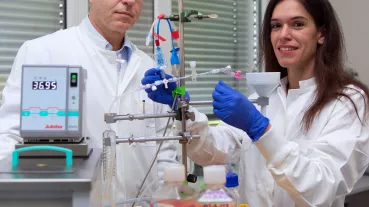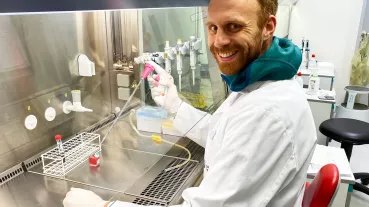Abdominal Area, Kidneys & Pelvis
|
Prävention der chronischen Cyclosporin-A vermittelten Nierentoxizität
Funding line:
Key Projects
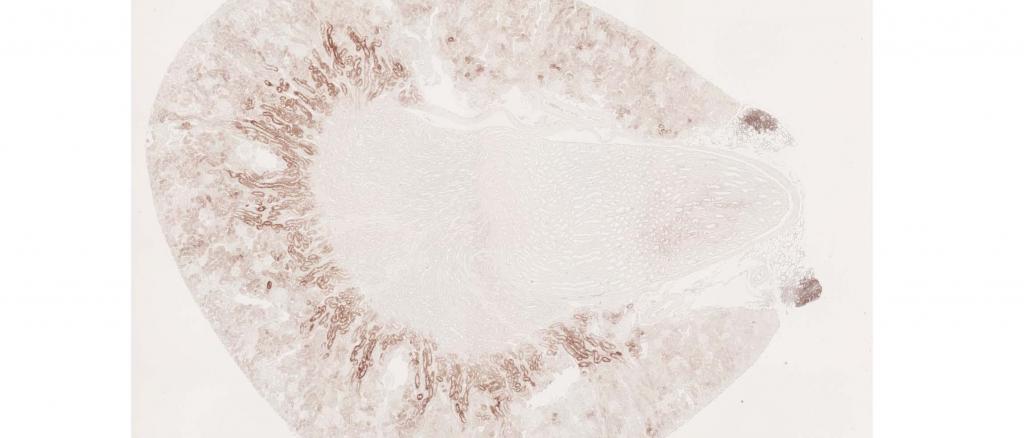
Cross section of kidney following CsA treatment. Dark areas indicate local hypoxia (Pimonidazole staining).
(© Susanne Mathia, Christian Rosenberger, Michael Fähling)
Cyclosporin A (CsA) is an immunosuppressant discovered in fungi. CsA serves to prevent rejection of transplant organs, or to treat autoimmune diseases. Generally, CsA treatment is long-term which increases the risk for renal toxicity and failure. The mechanisms responsible for renal toxicity are not well understood, but most likely include renal hypoxia and maladaptive responses to hypoxia. The scope of our project is to unravel the mechanisms behind renal CsA toxicity, more precisely the renal response to different types of hypoxia, novel signal transduction pathways, as well as the therapeutic potential of a novel class of drugs, the so-called hypoxia mimetics.
Here you can get further information.
